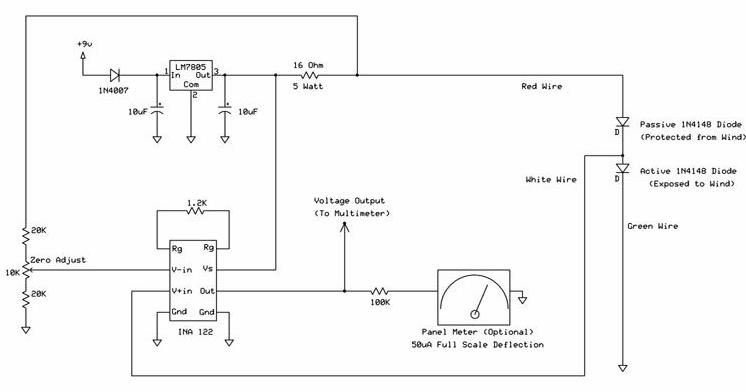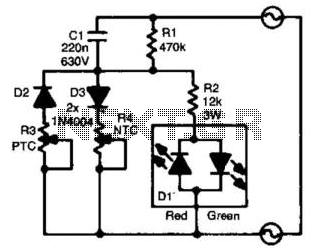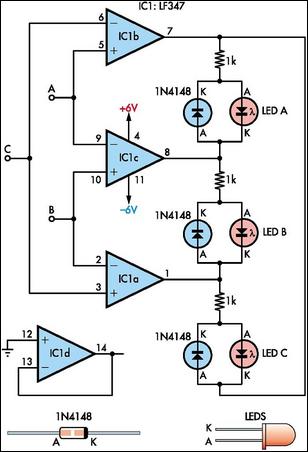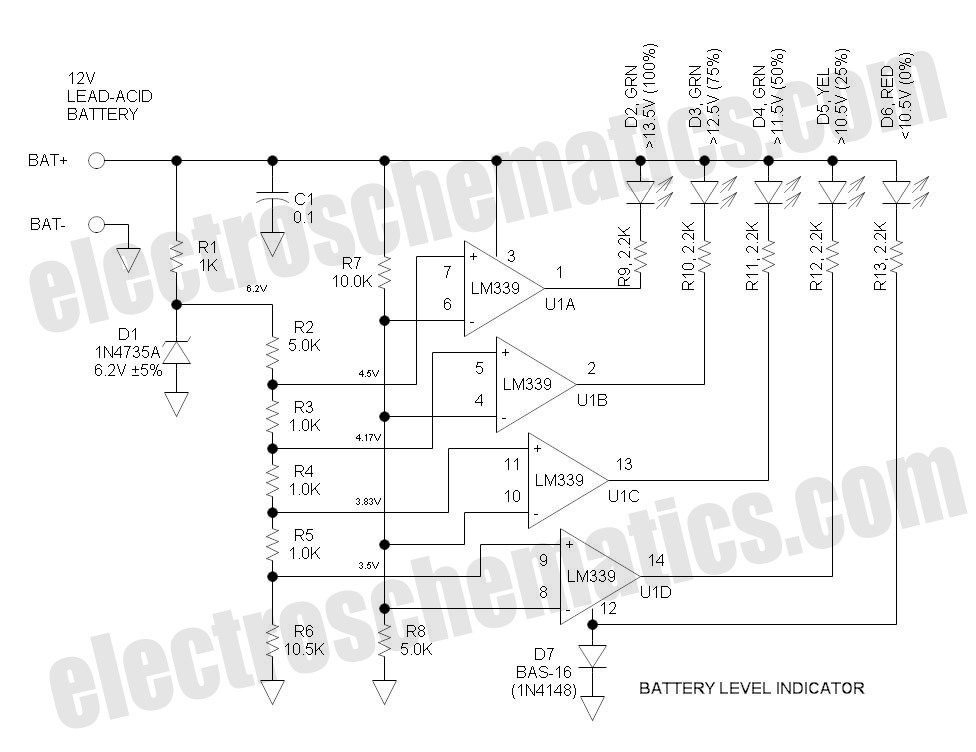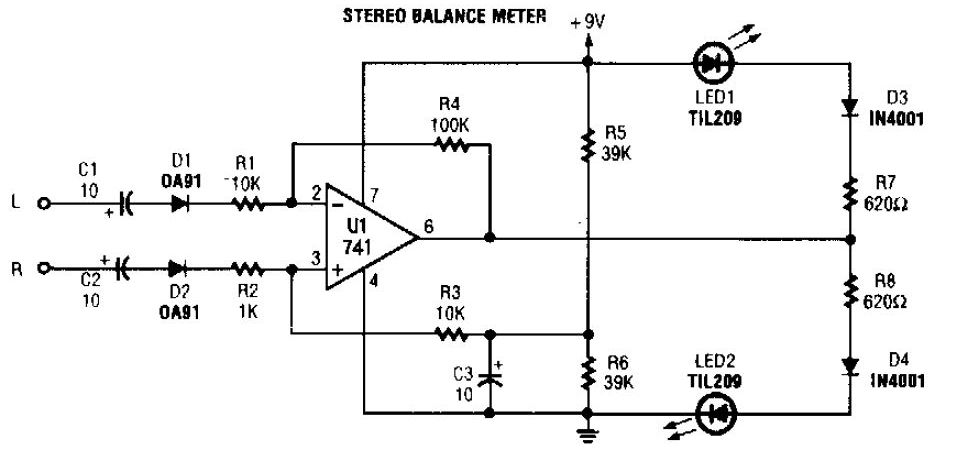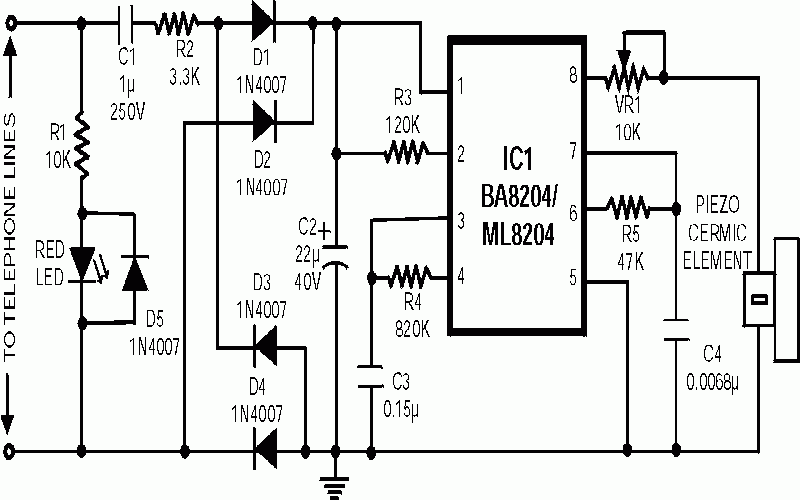
Visual Cw Offset Indicator
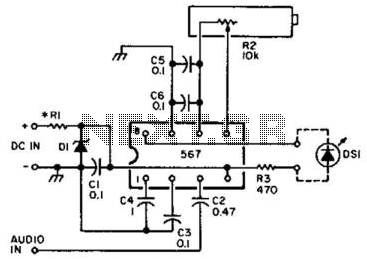
An NE567 tone decoder, tuned to the transceiver's CW offset frequency, ensures that the transceiver will be transmitting on the same frequency as the received CW signal. Simply tune the transceiver so that the LED lights. Eight to 13 Vdc is required; this can be taken from the transceiver supply or an extra battery. Audio is taken from the speaker or headphone output.
The NE567 tone decoder is a versatile integrated circuit designed for demodulating frequency-modulated signals, particularly useful in communication systems such as transceivers. In this application, the NE567 is configured to detect a specific continuous wave (CW) signal by tuning it to the transceiver's CW offset frequency. This allows the transceiver to synchronize its transmission frequency with the frequency of the received CW signal, ensuring clear communication without interference.
The operational setup requires a power supply of 8 to 13 Vdc, which can be sourced either from the transceiver's power supply or an external battery. This voltage range is critical for the proper functioning of the NE567, as it powers the internal components and enables effective signal processing.
To implement the circuit, the audio output is typically taken from the speaker or headphone jack of the transceiver. This audio signal is fed into the NE567, which processes the input to determine if it matches the tuned frequency. When the correct frequency is detected, the NE567 activates an output, often indicated by an LED. The LED serves as a visual confirmation that the transceiver is correctly tuned to the CW signal, allowing for easy adjustment by the operator.
In terms of circuit design, the NE567 requires a few external components, including resistors and capacitors, to set the desired frequency and bandwidth of detection. These components should be selected based on the specific frequency of operation and the characteristics of the CW signal being received. The output from the NE567 can also be used to trigger additional functions, such as enabling automatic frequency control or activating other indicators, enhancing the overall functionality of the transceiver system.
Overall, the integration of the NE567 tone decoder into a transceiver circuit significantly improves the reliability and accuracy of CW communications, making it an essential component for operators who rely on this mode of transmission. An NE567 tone decoder, tuned to the transceiver"s CW offset frequency, ensures that the transceiver will be tran smitting on the same frequency as the received CW signal. Simply tune the transceiver so that the LED lights. Eight to 13 Vdc is required; this can be taken from the transceiver supply or an extra battery. Audio is taken from the speaker or headphone output. 🔗 External reference
The NE567 tone decoder is a versatile integrated circuit designed for demodulating frequency-modulated signals, particularly useful in communication systems such as transceivers. In this application, the NE567 is configured to detect a specific continuous wave (CW) signal by tuning it to the transceiver's CW offset frequency. This allows the transceiver to synchronize its transmission frequency with the frequency of the received CW signal, ensuring clear communication without interference.
The operational setup requires a power supply of 8 to 13 Vdc, which can be sourced either from the transceiver's power supply or an external battery. This voltage range is critical for the proper functioning of the NE567, as it powers the internal components and enables effective signal processing.
To implement the circuit, the audio output is typically taken from the speaker or headphone jack of the transceiver. This audio signal is fed into the NE567, which processes the input to determine if it matches the tuned frequency. When the correct frequency is detected, the NE567 activates an output, often indicated by an LED. The LED serves as a visual confirmation that the transceiver is correctly tuned to the CW signal, allowing for easy adjustment by the operator.
In terms of circuit design, the NE567 requires a few external components, including resistors and capacitors, to set the desired frequency and bandwidth of detection. These components should be selected based on the specific frequency of operation and the characteristics of the CW signal being received. The output from the NE567 can also be used to trigger additional functions, such as enabling automatic frequency control or activating other indicators, enhancing the overall functionality of the transceiver system.
Overall, the integration of the NE567 tone decoder into a transceiver circuit significantly improves the reliability and accuracy of CW communications, making it an essential component for operators who rely on this mode of transmission. An NE567 tone decoder, tuned to the transceiver"s CW offset frequency, ensures that the transceiver will be tran smitting on the same frequency as the received CW signal. Simply tune the transceiver so that the LED lights. Eight to 13 Vdc is required; this can be taken from the transceiver supply or an extra battery. Audio is taken from the speaker or headphone output. 🔗 External reference
